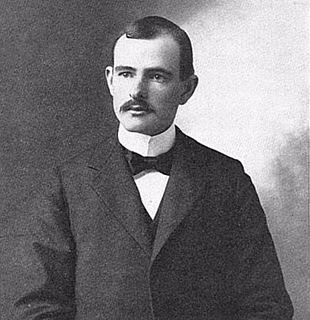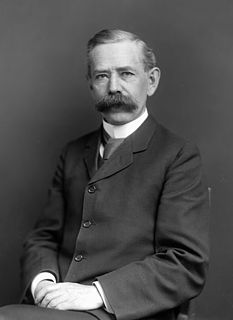
Richard Evelyn Byrd Jr. was an American naval officer and explorer. He was a recipient of the Medal of Honor, the highest honor for valor given by the United States, and was a pioneering American aviator, polar explorer, and organizer of polar logistics. Aircraft flights in which he served as a navigator and expedition leader crossed the Atlantic Ocean, a segment of the Arctic Ocean, and a segment of the Antarctic Plateau. Byrd claimed that his expeditions had been the first to reach both the North Pole and the South Pole by air. His claim to have reached the North Pole is disputed. He is also known for discovering Mount Sidley, the largest dormant volcano in Antarctica.

William Healey Dall was an American naturalist, a prominent malacologist, and one of the earliest scientific explorers of interior Alaska. He described many mollusks of the Pacific Northwest of America, and was for many years America's preeminent authority on living and fossil mollusks.

Frank Alexander Wetmore was an American ornithologist and avian paleontologist. He was the sixth Secretary of the Smithsonian Institution.

Clinton Hart Merriam was an American zoologist, mammalogist, ornithologist, entomologist, ecologist, ethnographer, geographer, and naturalist.

Rudolph Martin Anderson was an American born Canadian zoologist and explorer.

Effie M. Morrissey is a schooner skippered by Robert Bartlett that made many scientific expeditions to the Arctic, sponsored by American museums, the Explorers Club and the National Geographic Society. She also helped survey the Arctic for the United States Government during World War II. She is currently designated by the United States Department of the Interior as a National Historic Landmark as part of the New Bedford Whaling National Historical Park. She is the State Ship of Massachusetts.

Merlin Devere Tuttle is an American ecologist, conservationist, writer and wildlife photographer who has specialized in bat ecology, behavior, and conservation. He is credited with protecting the Austin Congress Avenue Bridge bat colony from extermination. Tuttle is currently active as founder and executive director of Merlin Tuttle's Bat Conservation (MTBC) in Austin, Texas.

Joseph Beal Steere was an American ornithologist.

The Pacific Railroad Surveys (1853–1855) consisted of a series of explorations of the American West to find possible routes for a transcontinental railroad across North America. The expeditions included surveyors, scientists, and artists and resulted in an immense body of data covering at least 400,000 square miles (1,000,000 km2) on the American West. "These volumes... constitute probably the most important single contemporary source of knowledge on Western geography and history and their value is greatly enhanced by the inclusion of many beautiful plates in color of scenery, native inhabitants, fauna and flora of the Western country." Published by the United States War Department from 1855 to 1860, the surveys contained significant material on natural history, including many illustrations of reptiles, amphibians, birds, and mammals. In addition to describing the route, these surveys also reported on the geology, zoology, botany, paleontology of the land as well as provided ethnographic descriptions of the Native peoples encountered during the surveys.

Joseph Grinnell was an American field biologist and zoologist. He made extensive studies of the fauna of California, and is credited with introducing a method of recording precise field observations known as the Grinnell System. He served as the first director of the Museum of Vertebrate Zoology at the University of California, Berkeley from the museum's inception in 1908 until his death.

Edgar Alexander Mearns was an American surgeon, ornithologist and field naturalist. He was a founder of the American Ornithologists' Union.

Laurence McKinley Gould was an American geologist, educator, and polar explorer. He made expeditions to both the Arctic and Antarctic, and was chief scientist on Richard Evelyn Byrd's first Antarctic expedition, which Gould described in his 1931 book Cold: the Record of an Antarctic Sledge Journey. He served as president of Carleton College from 1945 to 1962, and president of the American Association for the Advancement of Science in 1964. His namesakes include the research vessel Laurence M. Gould as well as Antarctic features including Gould Bay, Gould Coast, and Mount Gould.

Arthur Remington Kellogg was an American naturalist and a director of the United States National Museum. His work focused on marine mammals.
Francis Raymond "Ray" Fosberg was an American botanist. A prolific collector and author, he played a significant role in the development of coral reef and island studies.

Paul Bartsch was an American malacologist and carcinologist. He was named the last of those belonging to the "Descriptive Age of Malacology".

Marcus Ward Lyon Jr. was an American mammalogist, bacteriologist, and pathologist. He was born into a military family, and demonstrated an early interest in zoology by collecting local wildlife around his father's army posts. He graduated from Brown University in 1897, and continued his studies at George Washington University while working part-time at the United States National Museum (USNM). At the same time, he taught at Howard University Medical School and later George Washington University Medical School. He received his Ph.D. from George Washington University in 1913. In 1919, he and his wife, Martha, moved to South Bend, Indiana to join a newly opened clinic. Prior to moving, Lyon had published many papers on mammalogy, both during and after his tenure at the USNM. In these papers, he had formally described six species, three genera, and one family. Once in South Bend, he began to publish medical studies, too, but continued his work in mammalogy, with a particular focus on the local fauna of Indiana. He published more than 160 papers during his career.
Don Ellis Wilson is an American zoologist. His main research field is mammalogy, especially the group of bats which he studied in 65 countries around the world.

Fossil Lake is a dry lakebed in the remote high desert country of northern Lake County in the U.S. state of Oregon. During the Pleistocene epoch, Fossil Lake and the surrounding basin were covered by an ancient lake. Numerous animals used the lake resources. Over time, the remains of many of these animals became fossilized in the lake sediments. As a result, Fossil Lake has been an important site for fossil collection and scientific study for well over a century. Over the years, paleontologists have found the fossil remains of numerous mammals as well as bird and fish species there. Some of these fossils are 2 million years old.
Alfred Brazier Howell was an American zoologist, primarily a mammalogist.

Charles McCauley Hoy (1897–1923) was a field naturalist who obtained series of mammal and bird specimens for United States National Museum, travelling on expeditions to Australia, China and elsewhere. The large collections of specimens and notes he made in Australia from 1919 to 1922 followed a period of dramatic decline in its mammalian fauna, and have been examined by later workers in efforts to determine the causes of the event. Born in China to foreign missionaries, Hoy returned there in 1922 with a commission from W. L. Abbott to continue collecting specimens for the institution. His successful collecting in that region included becoming the first occidental researcher to obtain a species of rare river dolphin, but his works were curtailed by complications arising from childhood illness – while convalescing from a self-inflicted gunshot injury – and he died there in 1923.
















